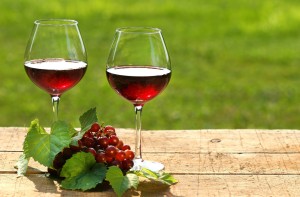 As a native of California’s wine country, I expected that moving to Colorado meant embracing snow and mountains, and leaving behind the vineyards. So when I saw grapes spanning Interstate 70 on my way to Vail, I could hardly believe my eyes. I was even more surprised to learn that not only does Colorado have a wine industry, but also that it has a decent history. In fact, wine grapes were first brought to Colorado in the 1900’s by miners, though the industry virtually disappeared as a result of prohibition. It experienced a second birth in Colorado beginning in the 1960s and is currently at an all time high, with approximately 100 wineries operating in the Rocky Mountains and the Front Range.
As a native of California’s wine country, I expected that moving to Colorado meant embracing snow and mountains, and leaving behind the vineyards. So when I saw grapes spanning Interstate 70 on my way to Vail, I could hardly believe my eyes. I was even more surprised to learn that not only does Colorado have a wine industry, but also that it has a decent history. In fact, wine grapes were first brought to Colorado in the 1900’s by miners, though the industry virtually disappeared as a result of prohibition. It experienced a second birth in Colorado beginning in the 1960s and is currently at an all time high, with approximately 100 wineries operating in the Rocky Mountains and the Front Range.
Another consideration for farmers is grape varietal. When deciding which grapes to plant, it is important for farmers to choose winter hearty varietals. As far as whites are concerned, Chardonnay Grapes are the most common varietal grown in Colorado. Being the most winter hardy white around makes this grape and ideal one for the area. Additionally, Chardonnay is generally an early harvest grape, boasting ideal sugar levels in early to mid September, guaranteeing that it can be picked before the first snow. Though far less common, the next most widely planted white in Colorado is the dessert varietal, Riesling, which also fares relatively well in cold weather climates.
As far as reds are concerned, Merlot is number one in the state, and the second most commonly planted grape in Colorado, after Chardonnay. While not as hardy as Chardonnay grapes, Merlot is strong enough to survive Colorado winters. Less commonly planted, but just as hearty as Merlot; Cabernet Sauvignon grapes react well to the cool Colorado nights, and the long growing season lends them to becoming a full bodied and rich wine. One lovely common thread for Colorado red wines is their deep red color, which develops in the skin of the grapes.
The beautiful red color and rich body of these wines is a testament to the most poetic aspects of wine grapes. Oftentimes the most interesting and complex wines are made from the grapes that have experienced the most stress and hardship, not unlike human character. With Colorado boasting rocky soil and cold weather, there is the potential to create some really interesting flavors, making Colorado wines unlike any others. To see for yourself what Colorado’s wine industry has to offer, be sure to check out the Colorado Mountain Winefest in Grand Junction held annually in September!
Prior her current role as an Educator at Walking Mountains Science Center in Avon, Sara Monson worked as both a harvest intern and wine tasting room attendant.








